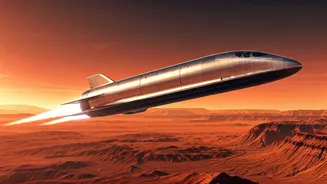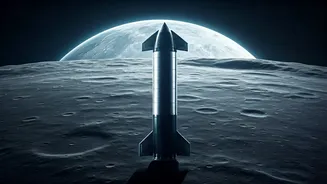The Genesis of SpaceX
In 2002, Elon Musk established SpaceX with a grand vision: to make humanity a multi-planetary species. The primary goal was to drastically reduce space
transportation costs. Musk envisioned a future where space travel was accessible and affordable. The early years of SpaceX were marked by both triumphs and setbacks. The company aggressively pursued the development of reusable rockets, a concept that was considered revolutionary at the time. Early Falcon 1 rockets faced challenges, including launch failures. However, SpaceX persisted, learning from each trial and refining their designs. They established a robust engineering culture that prioritized innovation and risk-taking. This relentless focus on improvement eventually led to a paradigm shift in space travel, enabling them to achieve goals that were once thought unattainable.
Falcon 9 and Beyond
The Falcon 9 rocket quickly became SpaceX's workhorse, propelling the company into the spotlight. Falcon 9's defining feature is its reusability. The first stage can land either on a landing pad or on a drone ship at sea, significantly lowering the cost of each launch. The Falcon 9’s success allowed SpaceX to secure lucrative contracts with NASA, including missions to the International Space Station (ISS). This partnership was a crucial step, proving SpaceX's capability and reliability. SpaceX has continuously improved the Falcon 9, increasing its payload capacity and refining the landing technology. The company has also developed the Falcon Heavy rocket, a more powerful launch vehicle capable of carrying heavier payloads, which further cemented SpaceX's leadership in the industry. These advancements demonstrate SpaceX’s commitment to advancing space technology.
Starlink: A Bold Venture
Starlink is SpaceX's ambitious project to create a global satellite internet network. The plan involves launching thousands of small satellites into low Earth orbit. The ultimate goal is to provide high-speed, low-latency internet access to users worldwide, even in remote areas. SpaceX began deploying Starlink satellites using its Falcon 9 rockets. The company has already launched a large constellation of satellites, and the service is available in numerous countries. Starlink has attracted users in areas where reliable internet is difficult to obtain. The project faces challenges, including regulatory hurdles, and concerns about space debris. However, Starlink represents a major step towards bridging the digital divide and connecting the world, and remains a key component of SpaceX's long-term strategy.
SpaceX's Future Goals
SpaceX's aspirations extend far beyond providing internet services and launching payloads. The company has its sights set on interplanetary travel, with Mars as the ultimate destination. SpaceX is actively developing the Starship, a fully reusable transportation system designed to carry both cargo and humans to Mars and other destinations. The Starship is currently undergoing rigorous testing. The successful development of Starship would be a monumental achievement, opening up opportunities for colonizing Mars. SpaceX also continues to focus on improving launch capabilities. The company is actively working to refine its rocket technology. This includes efforts to increase reliability, lower costs, and push the boundaries of space exploration. SpaceX plans to play a pivotal role in shaping humanity's future in space.
Impact and Innovation
SpaceX has transformed the space industry. Its emphasis on reusability and cost-effectiveness has disrupted traditional business models. The company has driven down the cost of space travel and increased accessibility. This has enabled the launch of satellites and facilitated other space-based activities. SpaceX has also inspired innovation, encouraging other companies to adopt new technologies and strategies. The company's success has also spurred renewed public interest in space exploration. SpaceX’s contributions go beyond technical innovation, having a major impact on the space economy and promoting global collaboration. It continues to influence policy and foster innovation.













